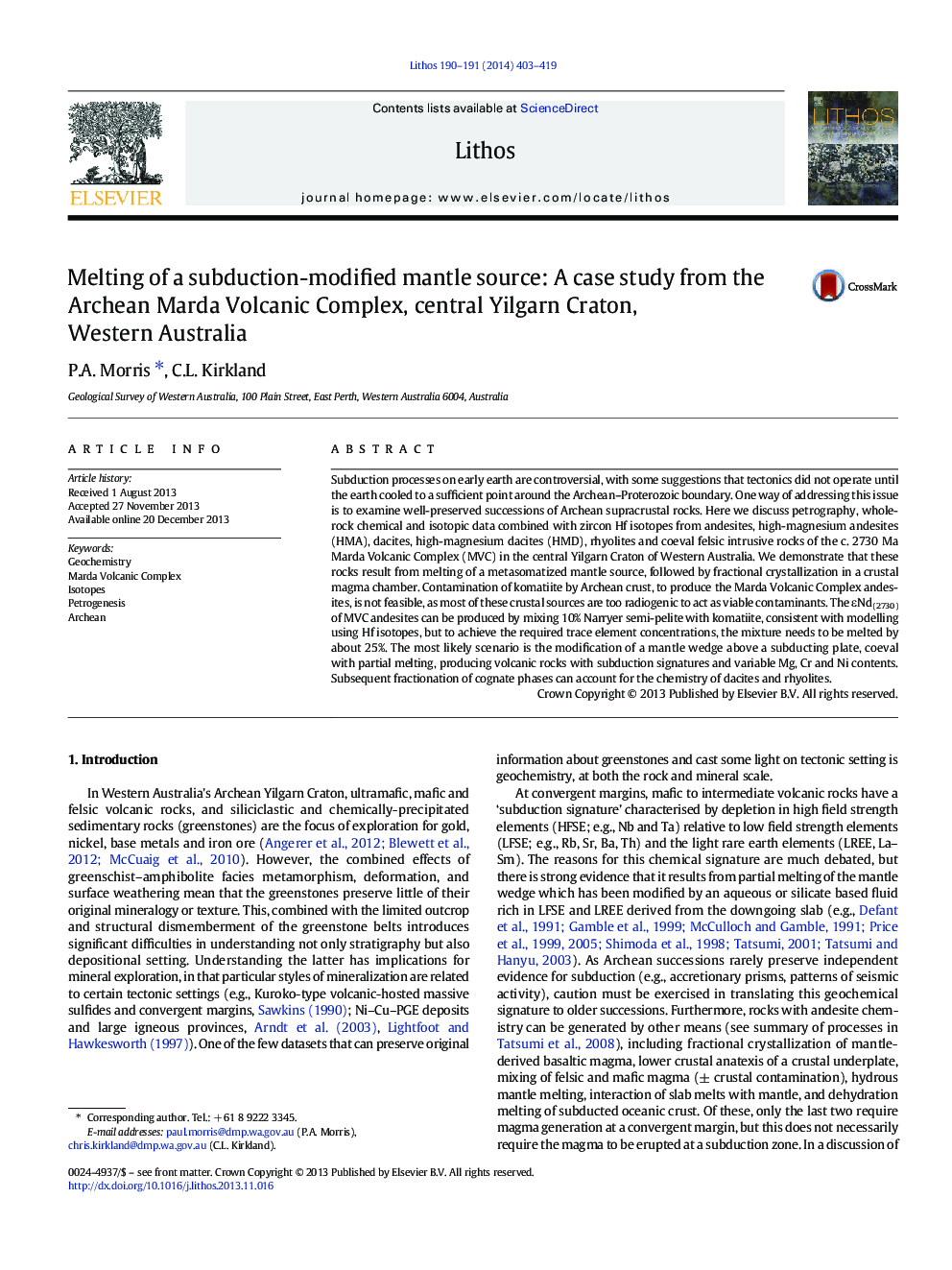| کد مقاله | کد نشریه | سال انتشار | مقاله انگلیسی | نسخه تمام متن |
|---|---|---|---|---|
| 4716025 | 1638680 | 2014 | 17 صفحه PDF | دانلود رایگان |
• We discuss the petrogenesis of the Archean Marda Volcanic Complex.
• Chemically more evolved rocks result from fractional crystallization.
• Single-stage crustal contamination of komatiite cannot explain andesite chemistry.
• Andesite results from source contamination followed by partial melting.
• The most likely andesite source is a subduction-modified mantle wedge.
Subduction processes on early earth are controversial, with some suggestions that tectonics did not operate until the earth cooled to a sufficient point around the Archean–Proterozoic boundary. One way of addressing this issue is to examine well-preserved successions of Archean supracrustal rocks. Here we discuss petrography, whole-rock chemical and isotopic data combined with zircon Hf isotopes from andesites, high-magnesium andesites (HMA), dacites, high-magnesium dacites (HMD), rhyolites and coeval felsic intrusive rocks of the c. 2730 Ma Marda Volcanic Complex (MVC) in the central Yilgarn Craton of Western Australia. We demonstrate that these rocks result from melting of a metasomatized mantle source, followed by fractional crystallization in a crustal magma chamber. Contamination of komatiite by Archean crust, to produce the Marda Volcanic Complex andesites, is not feasible, as most of these crustal sources are too radiogenic to act as viable contaminants. The εNd(2730) of MVC andesites can be produced by mixing 10% Narryer semi-pelite with komatiite, consistent with modelling using Hf isotopes, but to achieve the required trace element concentrations, the mixture needs to be melted by about 25%. The most likely scenario is the modification of a mantle wedge above a subducting plate, coeval with partial melting, producing volcanic rocks with subduction signatures and variable Mg, Cr and Ni contents. Subsequent fractionation of cognate phases can account for the chemistry of dacites and rhyolites.
Journal: Lithos - Volumes 190–191, March 2014, Pages 403–419
